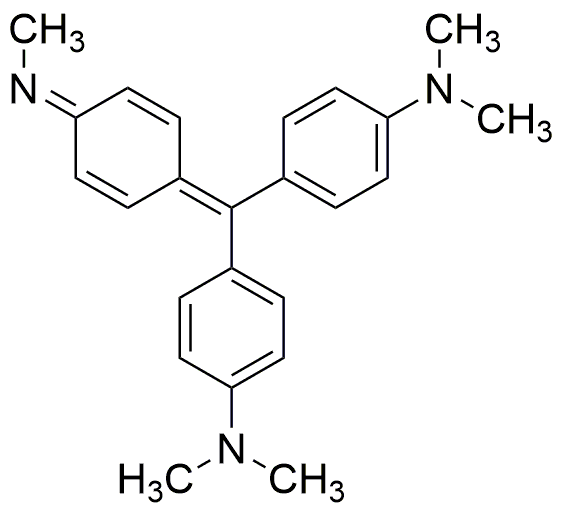Methyl violet B base is widely utilized in research focused on:
- Histology and Cytology: This compound is commonly used as a dye in staining biological tissues, helping researchers visualize cellular structures under a microscope.
- Textile Industry: Methyl violet B base serves as a colorant in textiles, providing vibrant hues that are resistant to fading, making it ideal for high-quality fabric applications.
- Biological Research: It is employed in microbiological studies to differentiate between various types of bacteria, aiding in the identification and classification of microbial species.
- Pharmaceuticals: The compound is used in the formulation of certain medications, where its properties help in the development of effective drug delivery systems.
- Environmental Monitoring: Methyl violet B base can be utilized in assessing water quality, as it helps detect the presence of certain pollutants and contaminants in aquatic environments.
General Information
Properties
Safety and Regulations
Applications
Methyl violet B base is widely utilized in research focused on:
- Histology and Cytology: This compound is commonly used as a dye in staining biological tissues, helping researchers visualize cellular structures under a microscope.
- Textile Industry: Methyl violet B base serves as a colorant in textiles, providing vibrant hues that are resistant to fading, making it ideal for high-quality fabric applications.
- Biological Research: It is employed in microbiological studies to differentiate between various types of bacteria, aiding in the identification and classification of microbial species.
- Pharmaceuticals: The compound is used in the formulation of certain medications, where its properties help in the development of effective drug delivery systems.
- Environmental Monitoring: Methyl violet B base can be utilized in assessing water quality, as it helps detect the presence of certain pollutants and contaminants in aquatic environments.
Documents
Safety Data Sheets (SDS)
The SDS provides comprehensive safety information on handling, storage, and disposal of the product.
Product Specification (PS)
The PS provides a comprehensive breakdown of the product’s properties, including chemical composition, physical state, purity, and storage requirements. It also details acceptable quality ranges and the product's intended applications.
Certificates of Analysis (COA)
Search for Certificates of Analysis (COA) by entering the products Lot Number. Lot and Batch Numbers can be found on a product’s label following the words ‘Lot’ or ‘Batch’.
Numéro de catalogue
Numéro de lot/série
Certificates Of Origin (COO)
This COO confirms the country where the product was manufactured, and also details the materials and components used in it and whether it is derived from natural, synthetic, or other specific sources. This certificate may be required for customs, trade, and regulatory compliance.
Numéro de catalogue
Numéro de lot/série
Safety Data Sheets (SDS)
The SDS provides comprehensive safety information on handling, storage, and disposal of the product.
DownloadProduct Specification (PS)
The PS provides a comprehensive breakdown of the product’s properties, including chemical composition, physical state, purity, and storage requirements. It also details acceptable quality ranges and the product's intended applications.
DownloadCertificates of Analysis (COA)
Search for Certificates of Analysis (COA) by entering the products Lot Number. Lot and Batch Numbers can be found on a product’s label following the words ‘Lot’ or ‘Batch’.
Numéro de catalogue
Numéro de lot/série
Certificates Of Origin (COO)
This COO confirms the country where the product was manufactured, and also details the materials and components used in it and whether it is derived from natural, synthetic, or other specific sources. This certificate may be required for customs, trade, and regulatory compliance.


